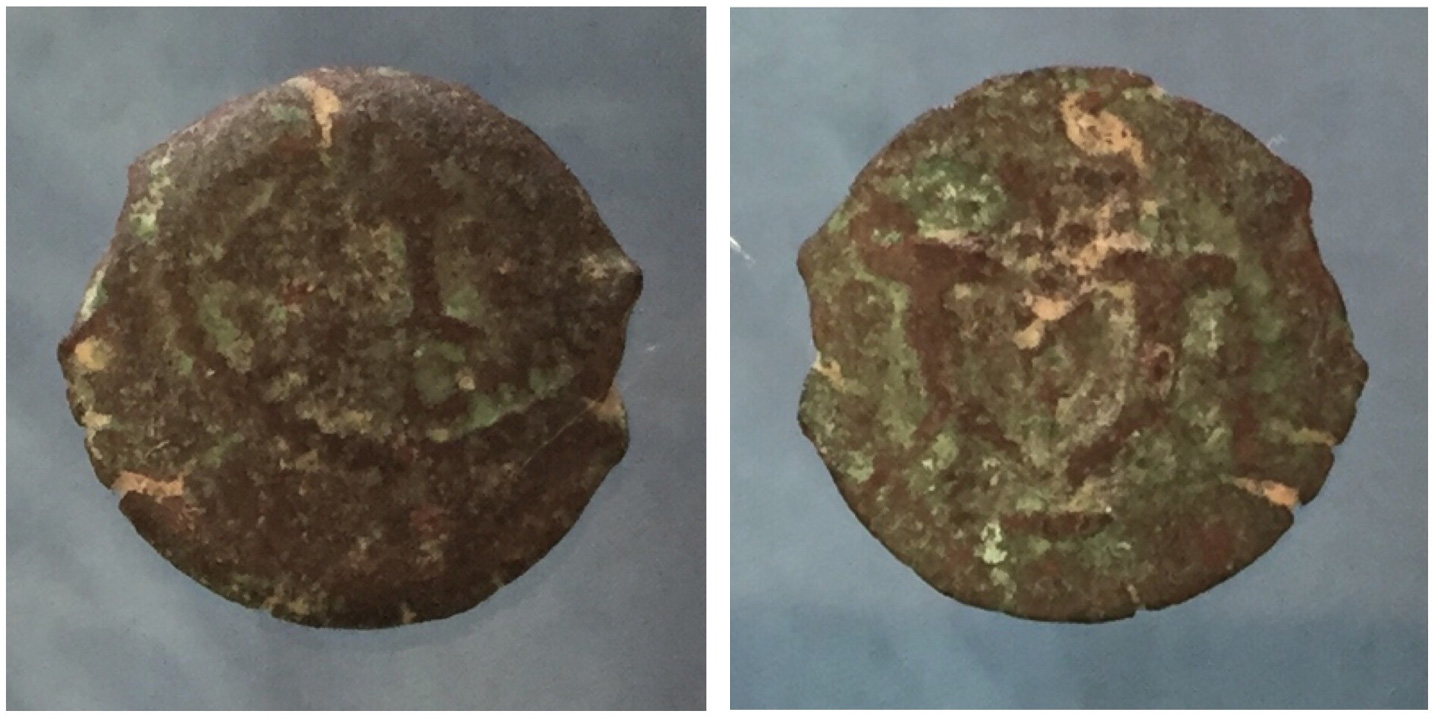Roger Uselton Collection of Ancient and Biblical Coins
Coin Detail
- Uselton Catalog #: 3
- Class: Biblical
- Ruling Authority: Herod I, The Great (37-4 B.C.)
- Type: AE (bronze) prutah
- Size: 14.28 mm
- Weight: 1.43 g
- Die Axis: N/A
- Obverse: Anchor surrounded by Greek inscription HPW? BACI (abbreviation of HPW?OY BACI?EWC; of king Herod).
- Reverse: Double cornucopiae; caduceus between.
- Exergue: N/A
- References: Ya’akov Meshorer, A Treasury of Jewish Coins (New York 2001), pl. 45, no. 59a or b; Hendin 500?
- Original #: 18
“Herod I, or Herod the Great (c. 75 – 4 BCE), was the king of Judea who ruled as a client of Rome. He has gained lasting infamy as the ‘slaughterer of the innocents’ as recounted in the New Testament’s book of Mathew. … [I]n his 33-year reign, he was responsible for many major building works which included a rebuilding of the Temple of Jerusalem, several aqueducts, and the massive fortress known as the Herodium.” -- Mark Cartwright
“The Anchor: The anchor was adopted from the Selukids, who used it to symbolize their naval strength. Anchors are depicted upside down, as they would be seen hung on the side of a boat ready for use..The Caduceus: The caduceus is the wing-topped staff, with two snakes winding about it, carried by Hermes. According to one myth it was given to him by Apollo. The caduceus was carried by Greek heralds and ambassadors and became a Roman symbol for truce, neutrality, and noncombatant status. Herod was a friend to Rome and the caduceus was an appropriate symbol in that regard. The Cornucopia: The cornucopia was a hollow animal horn used as a container. One of the most popular religious symbols of the ancient world, the cornucopia is also known as the ‘horn of plenty.’ “ –Forum Ancient Coins

